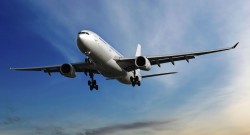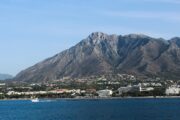 Despite the various problems that have plagued Malaga airport, including the volcanic ash cloud and the controllers’ conflict, the airport finished the year with a bang, concluding that in excess of 12 million passengers used the airport in 2010, which represents a considerable 3.8% increase over the previous year.
Despite the various problems that have plagued Malaga airport, including the volcanic ash cloud and the controllers’ conflict, the airport finished the year with a bang, concluding that in excess of 12 million passengers used the airport in 2010, which represents a considerable 3.8% increase over the previous year.
The launch of the new terminal at Malaga Airport, the T3, (as mentioned in my previous article) has raised the transit of passengers and flight traffic over the past year. Specifically, the airport in the capital of the Costa del Sol operated a total of 105,631 flights from January to December, a 2% increase over the previous year.
This is also the first time since the onset of the economic crisis in 2007 that passengers and flight movements have increased at all.
This expansion has hit two years of consecutive decline on the head, to push Malaga airport through to the second place on the list of best performing airports of Spain. The only other major Spanish airport that experienced a better outcome was Barcelona.
Indeed, the 3.8% increase is not merely an increase for Malaga, but is said to represent a higher growth than in the average of Spanish terminals, according to data provided by Spanish Airports and Air Navigation (Aena).
In the international arena, Malaga airport received about 9.5 million tourists, most of them on flights from European Union countries. However, the United Kingdom still remains the leader. This market moved 4,280,672 passengers through the terminal in the capital of the Costa del Sol, followed at distance by Germany, with little more than a million passengers and Ireland, with 588,000 passengers.
The airline with most passengers (as predicted by its President Michael O’Leary in 2009) was Ryanair, which carried 2.1 million passengers in 2010 to and from Malaga, almost double the previous year, and overtaking Easyjet who have now been humbled to second place.
Ryanair currently has 47 connections to several locations in Spain and Europe.















